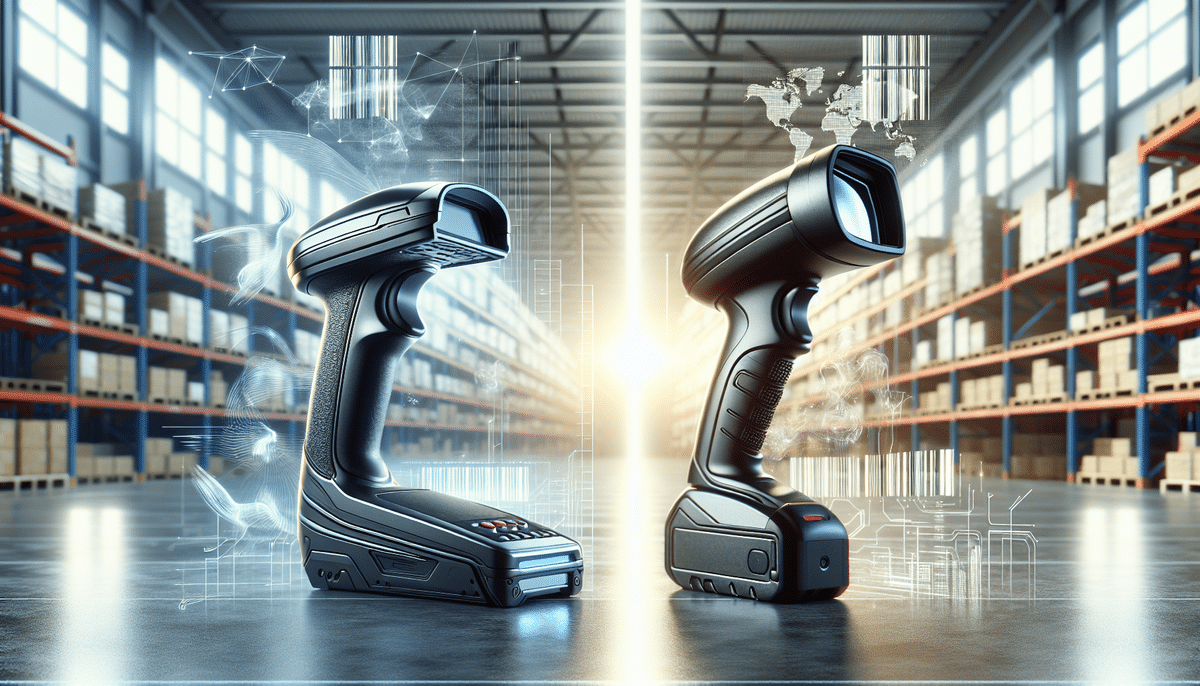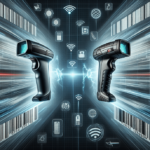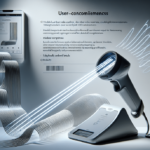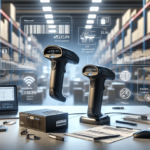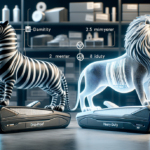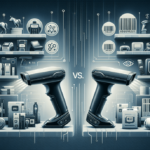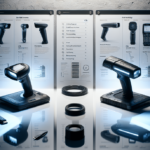Datalogic Gryphon I GD4500 vs Zebra DS8178
Barcode scanners are indispensable tools across a variety of industries, including retail, healthcare, manufacturing, and more. They enable efficient and accurate barcode scanning, minimizing errors, conserving time, and boosting productivity. With an extensive range of barcode scanner options available in the market, the Datalogic Gryphon I GD4500 and the Zebra DS8178 have emerged as two of the most popular choices. This comprehensive comparison delves into the features, design, ergonomics, performance, connectivity, user experience, pricing, and industry suitability of both barcode scanners. Additionally, we will explore up-to-date data and insights to help you make an informed decision.
Introduction to Barcode Scanners
Barcode scanners are devices that decode barcodes and convert them into data that computers can process. By emitting a light source to read the barcode, these scanners capture the reflected light pattern to identify the information encoded within the bars and spaces. Barcode scanners come in various types, each suited for specific applications:
- Handheld Barcode Scanners: Commonly used in retail stores and warehouses, these portable scanners can be easily moved to scan items.
- Fixed Mount Scanners: Typically used in manufacturing and production lines, these stationary scanners are fixed in place to scan items as they pass by.
- Presentation Scanners: Designed for presentations and events, these scanners are used by speakers to scan barcodes on slides or handouts and are also deployed in trade shows to scan attendee badges.
According to a 2023 Statista report, the global barcode scanner market is projected to reach significant growth, driven by the increasing demand for automation and efficiency across industries.
Key Features Comparison: Datalogic Gryphon I GD4500 vs Zebra DS8178
Datalogic Gryphon I GD4500 Features
The Datalogic Gryphon I GD4500 is a handheld corded barcode scanner, ideal for applications in retail, healthcare, and manufacturing. Key features include:
- Motion Tolerance: Captures 1D and 2D barcodes even at high speeds, enhancing scanning efficiency (Datalogic GD4500 Specs).
- Reading Range: Offers an impressive reading range of up to 30cm on standard density codes, facilitating easy scanning of hard-to-reach barcodes.
- Motionix Technology: Detects scanner movement and adjusts scanning speed accordingly, reducing user fatigue and increasing productivity.
- Durable Design: Built to endure drops from up to 1.8 meters and boasts an IP52 rating, protecting against dust and water splashes.
- User-Friendly Interface: Equipped with a bright, clear display that provides real-time feedback, enhancing the user experience.
Overall, the Datalogic Gryphon I GD4500 stands out as a reliable and versatile barcode scanner that optimizes efficiency and accuracy across various industries.
Zebra DS8178 Features
The Zebra DS8178 is a popular handheld corded and wireless barcode scanner widely used across multiple industries. Its standout features include:
- Superior Scanning Performance: Features a fast and accurate reading range of up to 45cm, supporting both 1D and 2D barcodes, including high-density codes commonly used in electronics manufacturing (Zebra DS8178 Specs).
- Rugged Design: Engineered to withstand drops from up to 6 feet and operate in extreme temperatures, ensuring durability in various environments.
- Bluetooth Connectivity: Enables wireless connections to devices like smartphones and tablets, enhancing user flexibility and reducing cable clutter.
- User-Friendly Interface: Features a bright, easy-to-read display with real-time feedback and an intuitive button layout, simplifying operation for new users.
Overall, the Zebra DS8178 is a robust and versatile barcode scanner that meets the diverse needs of various industries through its durable design and advanced features.
Design, Ergonomics, and Durability
When evaluating the Datalogic Gryphon I GD4500 and the Zebra DS8178 based on design and ergonomics, several factors come into consideration:
Ergonomic Design
- Datalogic Gryphon I GD4500: Offers an ergonomic design that fits comfortably in the hand, minimizing user fatigue. Lightweight at approximately 6 ounces, it's suitable for prolonged use.
- Zebra DS8178: While slightly heavier at 9.2 ounces, it features an "intelligent illumination" system that ensures optimal lighting conditions for scanning, even in low-light environments.
Ruggedness
- Datalogic Gryphon I GD4500: Built to endure drops from heights up to 1.8 meters, it is suitable for businesses that require durability.
- Zebra DS8178: Designed to withstand drops from up to 6 feet, making it more rugged and suitable for harsher environments.
Button Placement and Aesthetic Design
- Datalogic Gryphon I GD4500: Features buttons located on the top of the scanner for easy access, complemented by a modern and sleek appearance.
- Zebra DS8178: Buttons are placed on the side, which may be less accessible for some users, and it has a more traditional, industrial look.
Ultimately, Datalogic Gryphon I GD4500 is ideal for those prioritizing ergonomic comfort and a sleek design, while the Zebra DS8178 excels in ruggedness and durability.
Performance: Scanning Speed and Accuracy
Both the Datalogic Gryphon I GD4500 and the Zebra DS8178 are recognized for their high-performance scanning capabilities:
Scanning Speed
- Datalogic Gryphon I GD4500: Delivers a scanning speed of up to 325 scans per second, ensuring rapid data capture in high-volume environments.
- Zebra DS8178: Provides up to 240 scans per second, which is slightly lower but still highly efficient for most applications.
Scanning Accuracy
- Zebra DS8178: Exhibits superior scanning accuracy, particularly with damaged or poorly printed barcodes, which is crucial in environments with less-than-ideal barcode quality.
- Datalogic Gryphon I GD4500: Maintains high accuracy but may struggle slightly more compared to the Zebra DS8178 in challenging scanning conditions.
Both scanners are built to endure drops and offer IP-rated protections: the Datalogic Gryphon I GD4500 with IP52 and Zebra DS8178 with IP42, ensuring resistance against dust and water splashes.
Connectivity Options
Connectivity plays a vital role in the functionality of barcode scanners. Here's how the two models compare:
- Datalogic Gryphon I GD4500: Supports multiple connection interfaces including USB, RS-232, and keyboard wedge, making it compatible with various devices such as computers, tablets, and legacy systems.
- Zebra DS8178: Features Bluetooth connectivity for wireless connections to smartphones, tablets, and other Bluetooth-enabled devices, offering enhanced flexibility and reduced cable clutter.
The Datalogic Gryphon I GD4500 is more versatile in terms of connectivity options, supporting both modern and legacy systems. In contrast, the Zebra DS8178's Bluetooth functionality is ideal for dynamic workspaces that benefit from wireless operations.
User Experience and Feedback
User Experience with Datalogic Gryphon I GD4500
Users have reported positive experiences with the Datalogic Gryphon I GD4500, highlighting the following:
- Ease of Use: Intuitive operation and comfortable hold, suitable for extended scanning sessions.
- Performance: Exceptional reading range and motion tolerance enhance effectiveness in demanding environments.
- Durability: Robust construction and IP52 rating ensure reliability in busy work settings.
- Advanced Features: "Motionix" technology minimizes user fatigue, while the capability to scan barcodes from mobile devices streamlines processes in industries like retail and hospitality.
User Experience with Zebra DS8178
Feedback for the Zebra DS8178 has been predominantly positive, emphasizing:
- Scanning Performance: High scanning accuracy and speed, particularly effective with high-density and damaged barcodes.
- Ruggedness: Durable design ensures consistent performance in harsh environments.
- Connectivity: Bluetooth capability enhances flexibility, allowing users to scan freely without being tethered by cables.
- Comfort: Ergonomic design ensures comfort during prolonged use.
Pricing and Value
Price is a significant consideration when choosing between the Datalogic Gryphon I GD4500 and the Zebra DS8178. Generally, the Datalogic Gryphon I GD4500 is priced lower than the Zebra DS8178. However, pricing can vary based on the supplier, specific model configurations, and volume purchases. It's advisable to:
- Compare prices from reputable suppliers to ensure you get the best deal.
- Consider the total cost of ownership, including durability, connectivity needs, and potential productivity gains.
Investing in a more expensive scanner like the Zebra DS8178 might be justified if its advanced features and durability offer long-term benefits and savings.
Industry Suitability: Which Scanner Fits Best?
Choosing the right barcode scanner depends on your industry and specific application needs. Here's a breakdown of which scanner excels in different sectors:
- Retail: Datalogic Gryphon I GD4500 is ideal for environments demanding high motion tolerance and ease of use, enhancing the checkout experience.
- Healthcare: Both scanners are suitable, but the Zebra DS8178's rugged design and Bluetooth connectivity offer more flexibility in dynamic healthcare settings.
- Manufacturing: Zebra DS8178 is better suited for harsh manufacturing environments due to its superior durability and ability to read high-density codes.
- Hospitality: Datalogic Gryphon I GD4500's ability to scan barcodes from mobile devices streamlines customer service operations and inventory management.
Consulting with barcode scanner experts can further tailor your choice to your specific industry needs and operational requirements.
Final Verdict: Which Scanner is Better for Your Business Needs?
Both the Datalogic Gryphon I GD4500 and the Zebra DS8178 are highly reliable barcode scanners with unique strengths. Your choice depends on your business requirements:
- Datalogic Gryphon I GD4500: Best for: Businesses seeking high motion tolerance, ergonomic design, and a more affordable solution.
- Zebra DS8178: Best for: Environments that require ruggedness, higher scanning accuracy, and wireless connectivity.
Both scanners offer fast and accurate scanning, making them dependable choices for a range of applications across various industries.
Conclusion: Factors to Consider When Choosing a Barcode Scanner
When selecting a barcode scanner, evaluate the following factors to ensure the device meets your needs:
- Scanning Performance: Assess scanning speed and accuracy, especially for the types of barcodes used in your operations.
- Reading Range: Ensure the scanner can read barcodes at the necessary distance for your applications.
- Connectivity Options: Decide between wired and wireless connectivity based on your operational setup.
- Design and Ergonomics: Choose a scanner that is comfortable for extended use and suited to your work environment.
- Durability: Consider the environmental conditions the scanner will encounter, such as drops, dust, and moisture.
- Price: Balance features and performance with your budget to find the best value for your business.
Engaging with barcode scanner experts can provide personalized insights and recommendations tailored to your specific industry and application requirements.
Future Trends in Barcode Scanner Technology
The barcode scanner industry is rapidly evolving, with emerging technologies enhancing capabilities and expanding applications. Key future trends include:
- Artificial Intelligence (AI): Integration of AI and machine learning algorithms to improve scanning accuracy and speed, even under challenging conditions.
- Deep Learning: Advanced deep learning techniques enable scanners to better recognize and decode complex barcodes, reducing errors and increasing reliability.
- Enhanced Connectivity: Future barcode scanners will offer more seamless connectivity options, including improved wireless technologies and integration with Internet of Things (IoT) devices.
- Augmented Reality (AR): Augmented Reality integration can provide users with real-time visual feedback and enhanced data visualization during the scanning process.
As technology continues to advance, the demand for more reliable and efficient barcode scanners will grow. Staying abreast of the latest developments is essential for businesses seeking to maintain competitiveness and optimize operational efficiency.















